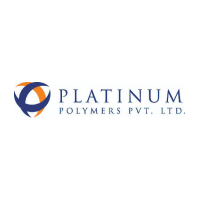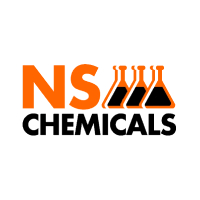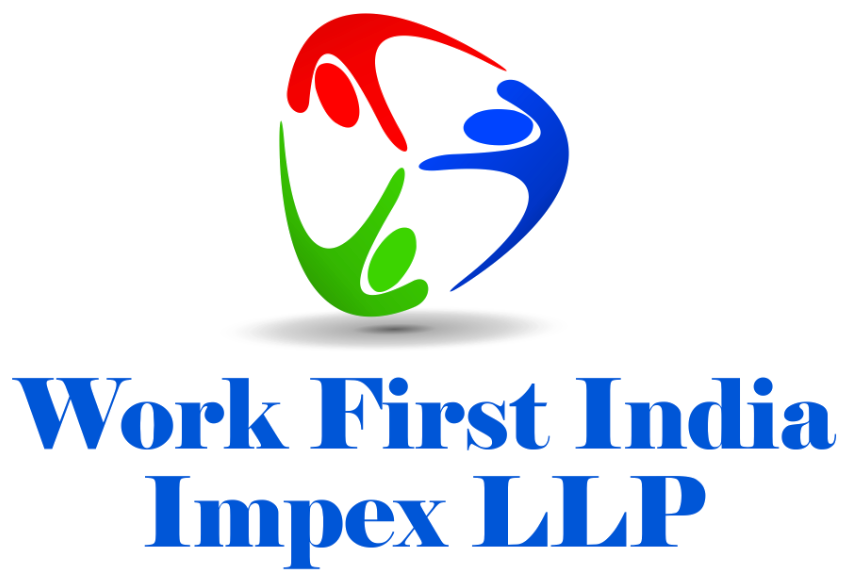Online Registration Process for IJCEPA Certificate, Fees & Documents
Online Registration Process for IJCEPA Certificate, Fees & Documents
The IJCEPA Certificate is a Certificate of Origin issued by the Directorate General of Foreign Trade (DGFT) in India. The DGFT-issued IJCEPA Certificate ensures that the commodity intended for export is entirely and legitimately manufactured or produced in the originating or exporting country, meeting all necessary qualifications and standards under trade agreements. In order to properly verify the goods, the exporter is required to produce multiple essential documents before the DGFT authorities to prove that the goods have been genuinely and lawfully manufactured in India. This ensures a high level of transparency and compliance with international trade policies and norms, safeguarding the credibility of exports.
The necessity of obtaining a Certificate of Origin is mainly for hassle-free customs clearance in the designated importing country. In case the goods being imported lack a Certificate of Origin, the importing country’s customs authorities will tax the goods, often leading to substantially higher import costs for the buyer due to additional duties and levies. The IJCEPA Certificate of Origin functions as a key trade document used by the importing country to ensure that the products fall under duty-free eligibility, confirming that the goods are rightfully originating from the country as stipulated under a free trade agreement. This certification is instrumental in fostering smoother trade relations between the participating nations, reducing trade restrictions, and promoting mutual economic growth through structured trade frameworks.
Table of Content
- Documents Required for IJCEPA Registration
- How to get IJCEPA Registration online?
- Process of IJCEPA Registration
- Fees for IJCEPA Registration
- Benefits of IJCEPA Registration
- Other Free Trade Agreements
- Authorized Agencies in India for Issuing Certificates of Origin
- Conclusion
- Frequently Asked Questions (FAQs)

Documents required for IJCEPA Registration
To apply for an IJCEPA Certificate of Origin, the exporter must submit the following documents to the Directorate General of Foreign Trade (DGFT):
• Organization based Digital Signature Certificate
• DGFT Login ID
• Updated Import Export Code
• Digital Signature Certificate software
• Mobile No. & Email address
• Commercial Invoice
• Purchase Bill that has details of quantity, origin of raw materials, consumables used
in product meant for export
• Manufacturer Exporter Declaration on the company’s Letterhead
• Product Description
• Purchase order from importer company
Process for IJCEPA Registration
The IJCEPA Registration refers to registration under the India-Japan Comprehensive Economic Partnership Agreement (IJCEPA) which facilitates trade. Here’s the step-by-step process:
• Account ID Creation with the help of Organization based DSC.
• Online application for Certificate of Origin (COO)
• Complete form with appropriate details
• Upload the necessary documents
• Issuance of IJCEPA Certificate
Fees for IJCEPA Registration
Importer Exporter code is the primary requirement to enter the international market and expand your business. While an IEC code allows you to operate an import-export business in Dewas, it has many additional benefits. Some of them are listed below:
| Particulars | Fees |
|---|---|
| Government Fee | ₹ 708 |
| Application Fee | ₹ 2000 |
| One time registration fee | ₹ 500 |
| Total Fee | ₹ 3208 |
Benefits of IJCEPA Registration
The India-Japan Comprehensive Economic Partnership Agreement (IJCEPA) offers several benefits to businesses engaged in trade between India and Japan, such as:
- Reducing tariffs & trade barriers in preferred countries
- Encouraging cross-border transactions between the territories of the Contracting counties.
- Promoting fair competition in the free trade states
- Ensuring equitable benefits to all Contracting countries
- Effective mechanism for joint administration & resolution of disputes
- Framework for regional cooperation and enhance mutual benefits for trade.
Import Export Code Validity and Renewal
The Validity of an IEC code is One year. Unlike other government licenses, The Import Export Code was valid for a lifetime. However, after the amendments in Foreign Trade Policy on 12th February 2021, the import-export code has now to be renewed every year.
This amendment made the update of Import Export Code details mandatory for every IEC and e-EIC holder. Even if there are no updates in IEC, the same has to be confirmed online on the DGFT portal. Failing to do so may result in your Import Export code deactivation.
IEC Registration with Professional Utilities
The complications in understanding the process and uploading appropriate documents are very hectic. It takes a lot of time and effort to get it right. There is a high chance of rejection at each step of document uploading.
We at Professional Utilities understand that completely. You can apply for the IEC registration seamlessly with us in just three simple steps.
Step 1: Fill Out the Form Please fill out our simple form and receive a callback from our team of experts.
Step 2: Submit Documents Provide all the required documents for the Import Export code registration and make a 50% payment in advance. Step 3: Get your IEC code Your Import export code will be delivered to you, and you will have to make the remaining payment.
Authorized Agencies in India for Issuing Certificates of Origin
In India, the authorized agencies responsible for issuing certificates of origin are clearly listed in Appendix 35 of the Handbook of Procedures, Volume-1, as per the Foreign Trade Policy. These are:
| Agreement | Agencies authorized to issue Certificate of Origin |
|---|---|
| Asia Pacific Trade Agreement (APTA) | Export Inspection Council (EIC); Export Development Authorities; Development Commissioners of EPZS and SEZS; FIEO |
| Global System of Trade Preferences (GSTP) | EIC for all products; Tobacco Board, Guntur for tobacco and tobacco products |
| India Afghanistan PTA | EIC |
| India ASEAN Trade in Goods Agreement | EIC |
| India Chile PTA | EIC |
| India JAPAN CEPA | EIC |
| India Mercosur PTA | EIC |
| India Singapore CECA | EIC |
| India Soth Korea CEPA | EIC |
| South Asian Free Trade Agreement(SAFTA) | EIC |
Other Free Trade AGREEMENT |
India has enhanced its market access commitments for neighbouring service providers. These commitments provide companies with an opportunity to build market expertise and grow by international expansion. Under Free or Preferential Trade Agreement there are multiple options where certificate of origin can be generated from India for import benefits to importing companies:-
ICPTA – India Chile Preferential Trade Agreement
SAFTA – South Asia Free Trade Agreement
SAPTA – SAARC Preferential Trade Agreement
IKCEPA – India Korea Comprehensive Economic Partnership Agreement
IJCEPA – India Japan Comprehensive Economic Partnership Agreements AIFTA-ASEAN India Free Trade Agreement
ISFTA – India Sri Lanka Free Trade Agreement
APTA-Asia Pacific Trade Agreement
GSP-Generalized System of Preferences
GSTP – Global System of Trade Preferences
IMCECA – India Malaysia Comprehensive Economic Cooperation Agreement
ISCECA – India Singapore Comprehensive Economic Cooperation Agreement
Conclusion
The APTA Certificate of Origin that is offered by the Indian Directorate General of Foreign Trade (DGFT) acts as an assurance that export goods are both manufactured and produced in the originating country. This certificate is required for import clearance in the importing country to avail trade at less tariff under the Asia-Pacific Trade Agreement and affordable trade. Exporters need to present legal documents on origin as well as processing of the products to be exported. Some of the advantages APTA registration has include affordable trades that help in improving and bringing out better trade relations between the different members of the society.
Why Professional Utilities?
At Professional Utilities, we leverage our industry knowledge and expertise to help businesses navigate complex regulations, minimize risks, and optimize operations for maximum efficiency and profitability.
- One Stop Corporate Solution
- PAN India Services
- Free Expert Assistance
- Dedicated Support Staff
- Google Verified Business
- Money-Back Guarantee
TRUSTED BY |






Frequently Asked Questions (FAQs)
A Comprehensive Economic Partnership Agreement (CEPA) or Comprehensive Economic Cooperation Agreement (CECA) is different from a traditional (FTA) Free Trade Agreement in two ways.
Firstly, CEPA or CECA are more comprehensive and ambitious than an FTA in terms of coverage of areas and the type of commitments. While a traditional Free Trade Agreement focuses mainly on goods; a CECA/CEPA is more ambitious in terms of a holistic coverage of many areas like services, investment, competition, government procurement, disputes etc.
Secondly, CEPA/CECA looks deeper at the regulatory aspects of trade than a Free Trade Agreement. It is on account of this that it encompasses mutual recognition agreements that cover the regulatory regimes of the partners. An MRA recognises different regulatory regimes of partners on the presumption that they achieve the same objectives.
Country of origin / Rules of origin (ROO) are the criteria needed to determine a product for purposes of international trade. Their significance is derived from the fact that duties & restrictions in several cases depend upon the source of imports. Rules of origin are used:
⚫ to implement measures and instruments of commercial policy such as antidumping duties and safeguard measures;
⚫ to determine whether imported products shall receive most- favored-nation (MFN) treatment or preferential treatment;
⚫ for the purpose of trade statistics;
⚫ for the application of labeling and marking requirements; and
⚫ for government procurement.
Countries negotiate Free trade Agreements for a number of
reasons:
• By eliminating tariffs and some non-tariff barriers Free trade Agreement partners get easier market access into one another’s markets. Countries negotiate FTA’s for a number of
reasons.
• Exporters prefer Free trade Agreement’s to multilateral trade liberalization because they get preferential treatment over non- Free trade Agreement member country competitors. For Instance in the case of ASEAN, ASEAN has a Free trade Agreement with India but not with Canada. ASEAN’s custom duty on leather shoes is 20% but under the Free trade Agreements with India it reduced duties to zero. Now assuming other costs being equal, an Indian exporter, because of this duty preference, will be more competitive than a Canadian exporter of shoes. Secondly, Free trade Agreement’s may also protect local exporters from losing out to foreign companies that might receive preferential treatment under other FTAs.
• Possibility of increased foreign investment from outside the Free trade Agreement. Consider 2 countries A and B having a Free trade Agreement. Country A has a high tariff and large domestic market. The firms based in country C may decide to invest in country A to cater to A’s domestic market. However, once A and B sign a Free trade Agreement and B offers a better business environment, C may decide to locate its plant in B to supply its products to A.
• Such occurrences are not limited to tariffs alone but it is also true in the case of non-tariff measures. Especially when a Mutual Recognition Agreement (MRA) is reached between countries A and B. Some experts are of the view that slow progress in multilateral negotiations due to complexities arising from a large number of countries to reach a consensus on polarizing issues, may have provided the impetus for FTA’s.
Possibility of increased foreign investment from outside the Free trade Agreement. Consider 2 countries A and B having a Free trade Agreement. Country A has a high tariff and large domestic market. The firms based in country C may decide to invest in country A to cater to A’s domestic market. However, once A and B sign a Free trade Agreement and B offers a better business environment, C may decide to locate its plant in B to supply its products to A.
• Such occurrences are not limited to tariffs alone but it is also true in the case of non-tariff measures. Especially when a Mutual Recognition Agreement (MRA) is reached between countries A and B. Some experts are of the view that slow progress in multilateral negotiations due to complexities arising from a large number of countries to reach a consensus on polarizing issues, may have provided the impetus for FTA’s.
The criteria in the (ROO) rules of origin sets out specific & detailed conditions on the level of processing that an imported item from a non Free Trade Agreement partner country must undergo in the Free Trade Agreement partner country (or other eligible countries in the region) before being eligible to be called an originating product of a Free Trade Agreement partner country. Some of the common standards used are:-
⚫ change in tariff class (this could be at the tariff chapter, tariff
heading or tariff sub heading level)
⚫ regional value addition
⚫ substantial processing or manufacturing by excluding some
minimal operations.
The four methods of supply-
Method 1: Cross border supply (supply from the territory of a Party into the territory of the other Party). For Instance an architect can send his architectural plan through electronic means; a lecturer can send teaching material to students in any other country; a doctor sitting in France can advise his patient in India through digital means. In all these cases, trade in services takes place and this is equal to cross-border movement of goods.
Method 2: Consumption abroad (consumption in the territory of a Party by the service consumer of the other Party). For Instance a tourist using hotel or restaurant services abroad; a ship or aircraft undergoing repair or maintenance services abroad.
Method 3: Commercial presence (by a service supplier of a Party, through commercial presence in the territory of the other Party). In this case, the service supplier establishes a legal presence in the form of a representative / branch office / joint venture/ subsidiary in the host country & starts supplying services. For Instance a bank opens its branch in another country.
Method 4: Presence/movement of natural persons (by a service supplier of a Party, through presence of natural persons of a Party in the territory of the other Party). For Instance Independent service suppliers (e.g. doctors, engineers, individual consultants, accountants, etc.) who provide services in another country. However, GATS covers only temporary movement & not citizenship, residence or employment on a permanent basis in the foreign country.
India has preferential access, economic cooperation and Free Trade Agreements (FTA) with about 54 individual countries. India has signed bilateral trade deals in the form of Comprehensive Economic Cooperation Agreement (CECA) / Comprehensive Economic Partnership Agreement (CEPA) / Free Trade Agreement / Preferential Trade Agreements (PTAs) with some 18 countries. India is a late & cautious, starter in concluding comprehensive PTA covering substantially all trade with some of its trading partners.
Other Import Export Services
- Other Import Export Services
- Import Export Code Renewal
- Coffee Board Registration SAFTA License
- IIP UN Mark Certificate
- ISCECA Certificate
- SEPC Registration
- Rubber Board Registration
- Cashew Export Promotion Council
- Apeda Registration
- Merchandise exports from India
- SAPTA License
- ICPTA Certificate Registration
- MSDS (SDS) Certificate For importers
- FIEO Registration
- Texprocil Registration
- Plastic Export Promotion Council
- AD code Registration
- Spice Board Registration
- APTA Certificate Registration
- IJCEPA Certificate Registration
- EPCH Membership Registration
- Coconut Board Registration
- Chemexcil Registration
- Handloom Export Promotion Council
- Tea Board Registration
- MSDS(Material Safety Data Registration)
- Capexil Certificate
- UAE CEPA Certificate Registration
- MPEDA Registration Online
- CLE Council of Leather Export
- Carpet Export Promotion Council
- Silk Export Promotion Council
